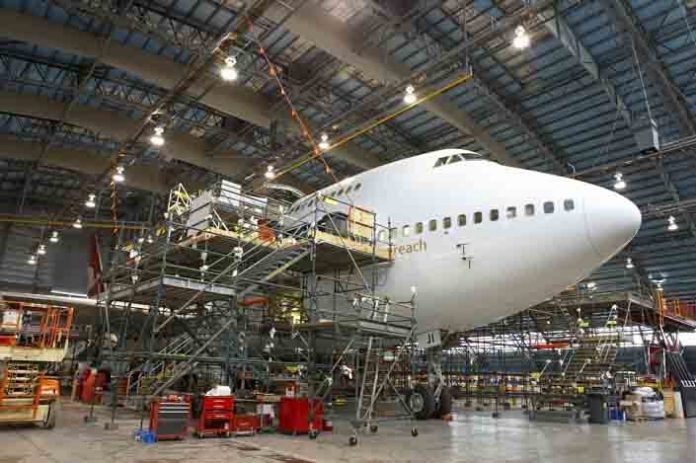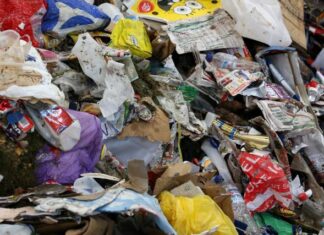
QANTAS will close its Avalon heavy maintenance facility at the end of March next year, sacking nearly 300 workers.
The move, sheeted by Qantas to the gradual retirement of its Boeing 747 fleet making the operation unviable, follows a desperate 11th-hour pitch by engineers to save their jobs by offering to take pay cuts.
Qantas domestic CEO Lyell Strambi said it was clear that despite the best endeavours of the airline, employee representative groups and suppliers there was no workable solution to continue operating the sub-scale maintenance facility.
“Qantas is gradually retiring our fleet of Boeing 747 aircraft, which means there is not enough work to keep our Avalon base viable and productive,” Mr Strambi said.
“Over the next four years there would have been up to 22 months with no scheduled maintenance at Avalon. No business could afford to continue operating a facility under those circumstances.
“After reviewing all of the options, the only realistic answer is to close Avalon and have the maintenance performed on our 747s at another facility.
“Our next step is to examine where this work will be done. As well as assessing existing onshore facilities we will also examine specialist Boeing 747 maintenance providers including in Germany, Singapore, Hong Kong, United Kingdom and United States. Any facility would need to meet Qantas’ safety standards and be approved by Australia’s safety regulator.”
Qantas will continue to maintain aircraft at its major heavy maintenance facility in Brisbane and conduct line maintenance at 19 ports around Australia including Melbourne.
Mr Strambi said Qantas was the only major airline that does heavy maintenance in Australia.
“Qantas is committed to engineering and maintenance in Australia and will continue to do the vast majority of its maintenance in Australia, employing thousands of people,” he said.”
“We have invested $30 million this year to upgrade our maintenance facilities in Brisbane and we will continue to do heavy maintenance on more than 110 aircraft there, including our fleet of Boeing 737s, Boeing 767s and Airbus A330s.”
Mr Strambi said Qantas will explore redeployment opportunities for the 53 impacted Qantas employees and provide generous redundancy packages. Qantas will also work closely with Forstaff, which employs 246 contractors at Avalon.
“We held numerous meetings with unions and employees as part of the eight-week review however none of the solutions that we explored or that were put forward would provide a sustainable future for the Avalon facility or our employees,” he said.
“I particularly acknowledge constructive offers from one of the unions which would see some employees take up to three months leave without pay in an effort to keep the facility open, however this wouldn’t come close to addressing the 22 months of no work over the next four years.
“This decision in no way reflects on our employees at Avalon, it simply reflects the structural changes to our fleet that means long periods of no heavy maintenance work.
“I’d like to thank all employees and contractors for their commitment to high quality maintenance and assure them that we will provide support through this transition.
“Our fleet is now the youngest it has been in two decades and more modern aircraft have up to half the maintenance needs of older ones. This will mean ongoing changes to our engineering operations in order for Qantas to remain competitive,” added Mr Strambi.
One off costs for FY14 associated with the closure of the Avalon facility, including redundancies, will be approximately $28 million, with net benefits expected to be realised from FY15.
BACKGROUND
- In 2004, Qantas had 36 Boeing 747 aircraft in its fleet which were maintained at Avalon. Today there are 15 and in three years there will be 10.
- Qantas has increased its fleet of Airbus A330 and Airbus A380 aircraft in recent years which have replaced the retiring Boeing 747s. It also has 50 options and purchase rights for the B787-9.
- Qantas Engineering employs approximately 4,400 people including around 600 in Melbourne.
- The Qantas Group recently announced the creation of up to 100 new jobs with the establishment of maintenance and training facilities in Melbourne to support Jetstar’s fleet of 14 Boeing 787s.
- Jetstar does some maintenance on its fleet of 60 A320 aircraft in Melbourne (line maintenance) and Newcastle (heavy maintenance).
- Heavy maintenance refers to major overhauls on aircraft. This can involve up to two months’ scheduled engineering work every three to four years for each aircraft. Line maintenance refers to regular checks or servicing of each aircraft, ranging from a few hours a week to one or two days each month.
- In May 2012, Qantas announced the closure of its Tullamarine heavy maintenance facility, leaving Avalon and Brisbane as its two heavy maintenance facilities. At the time, Qantas flagged that it would ultimately consolidate into one Australian heavy maintenance base.






